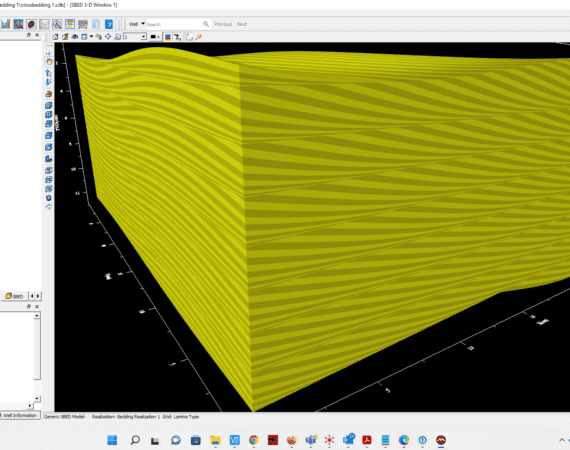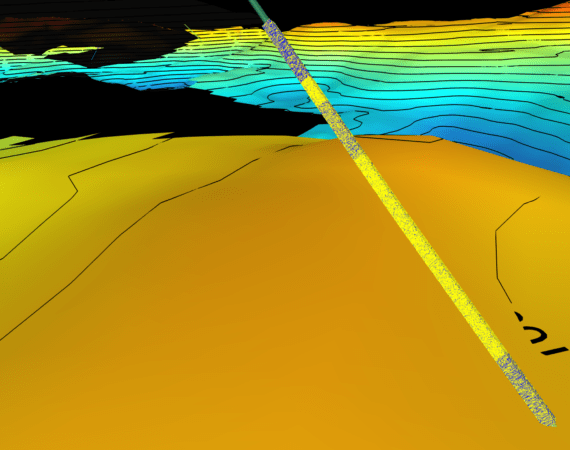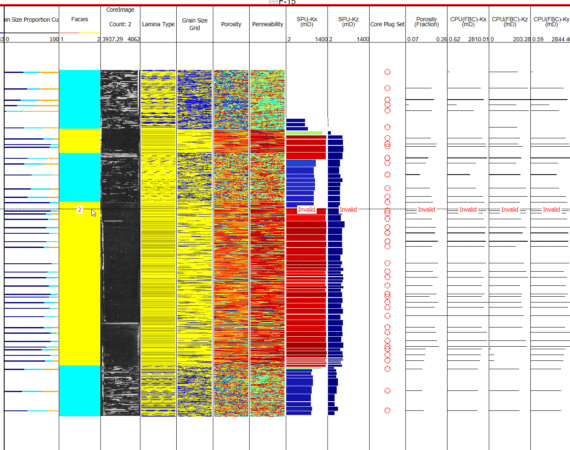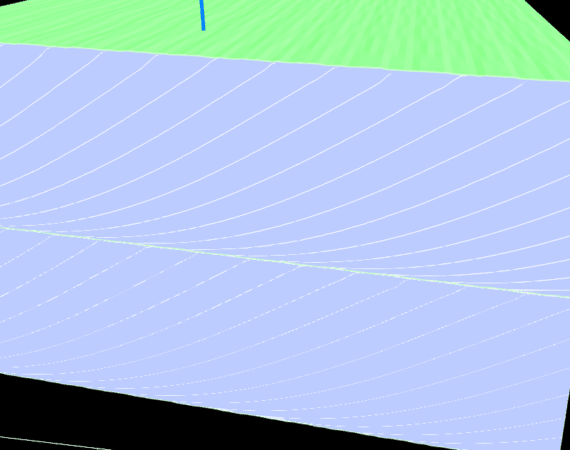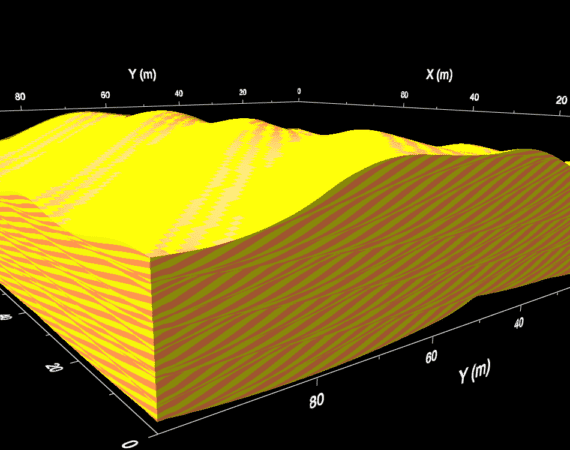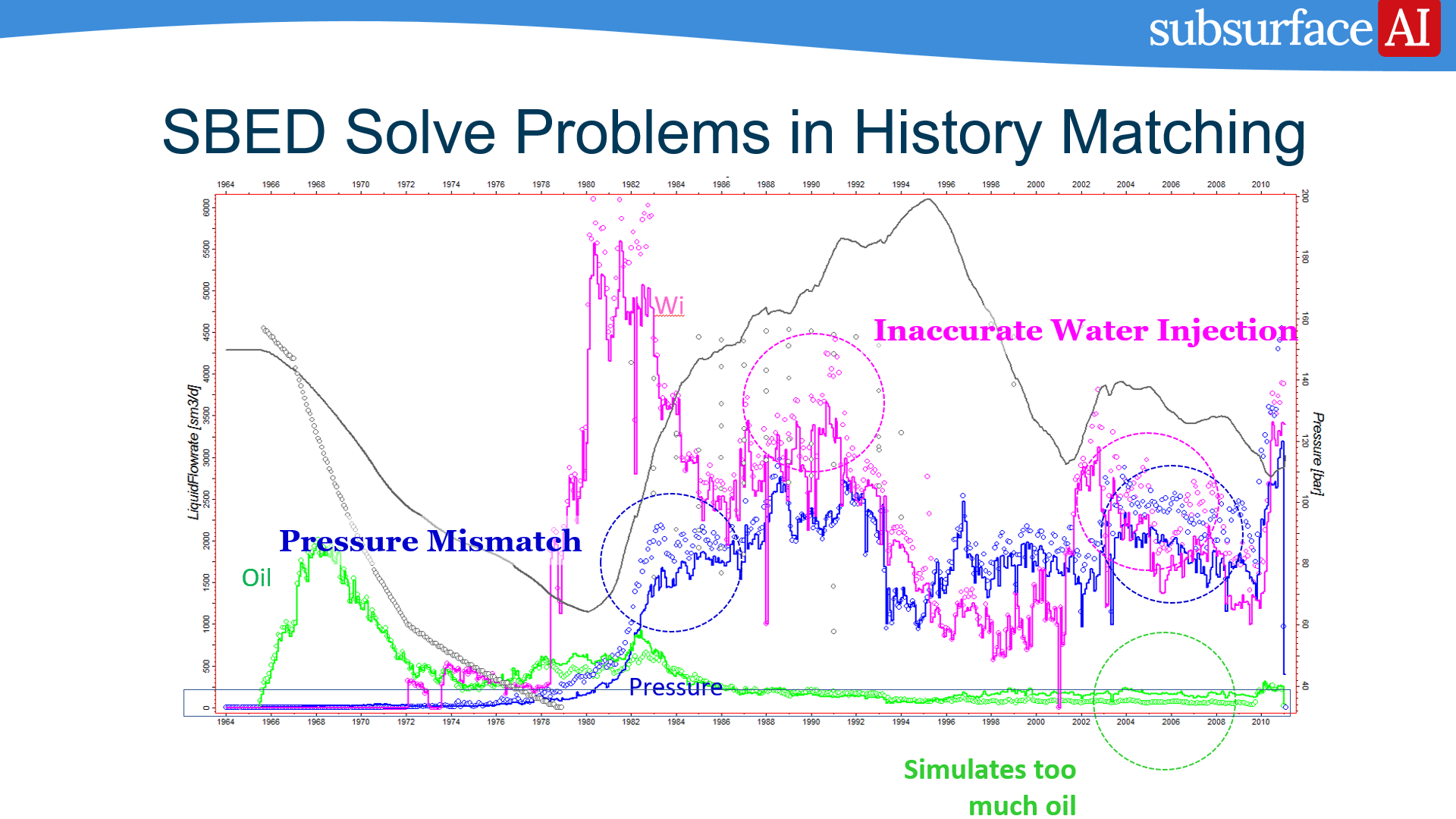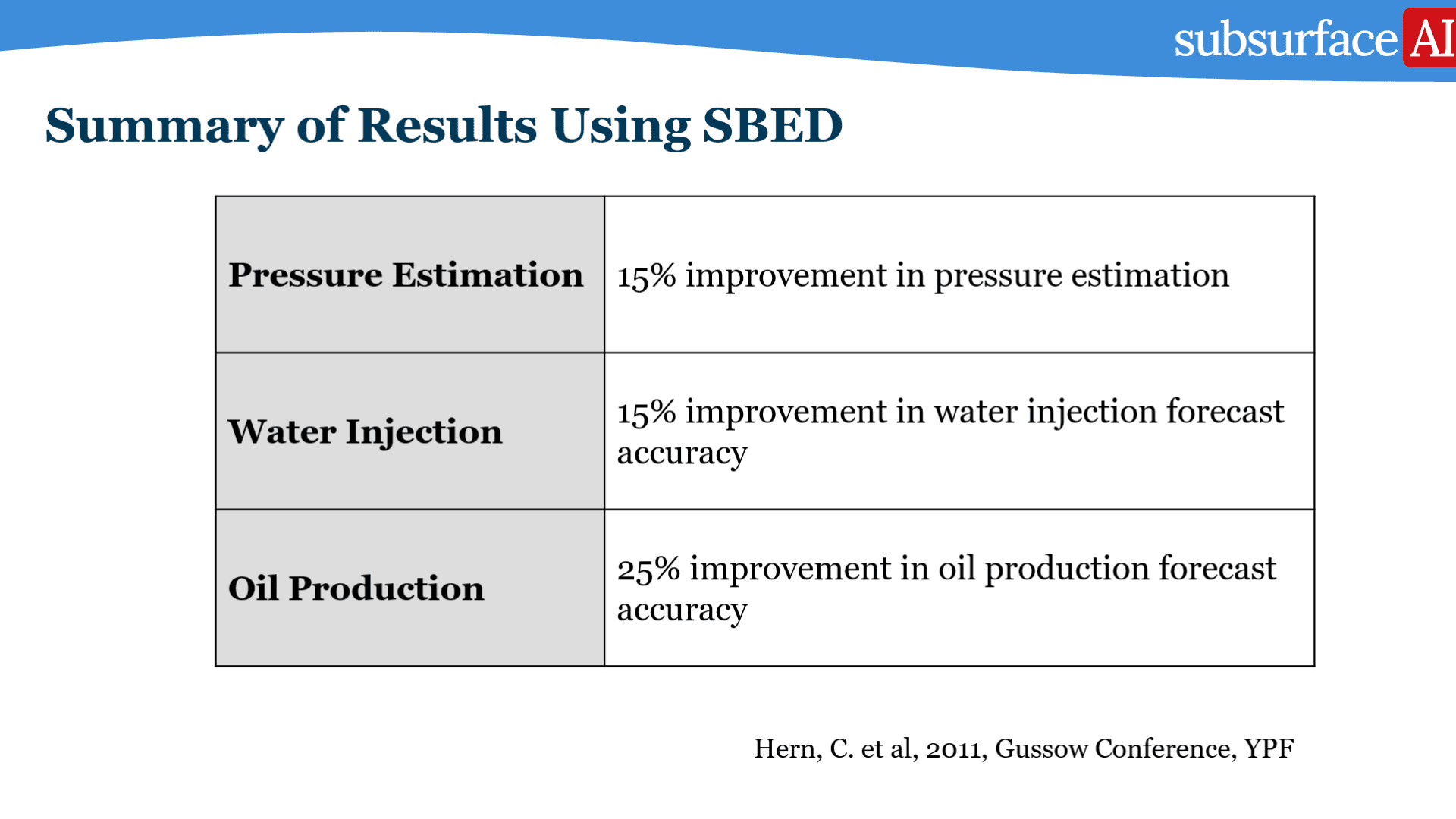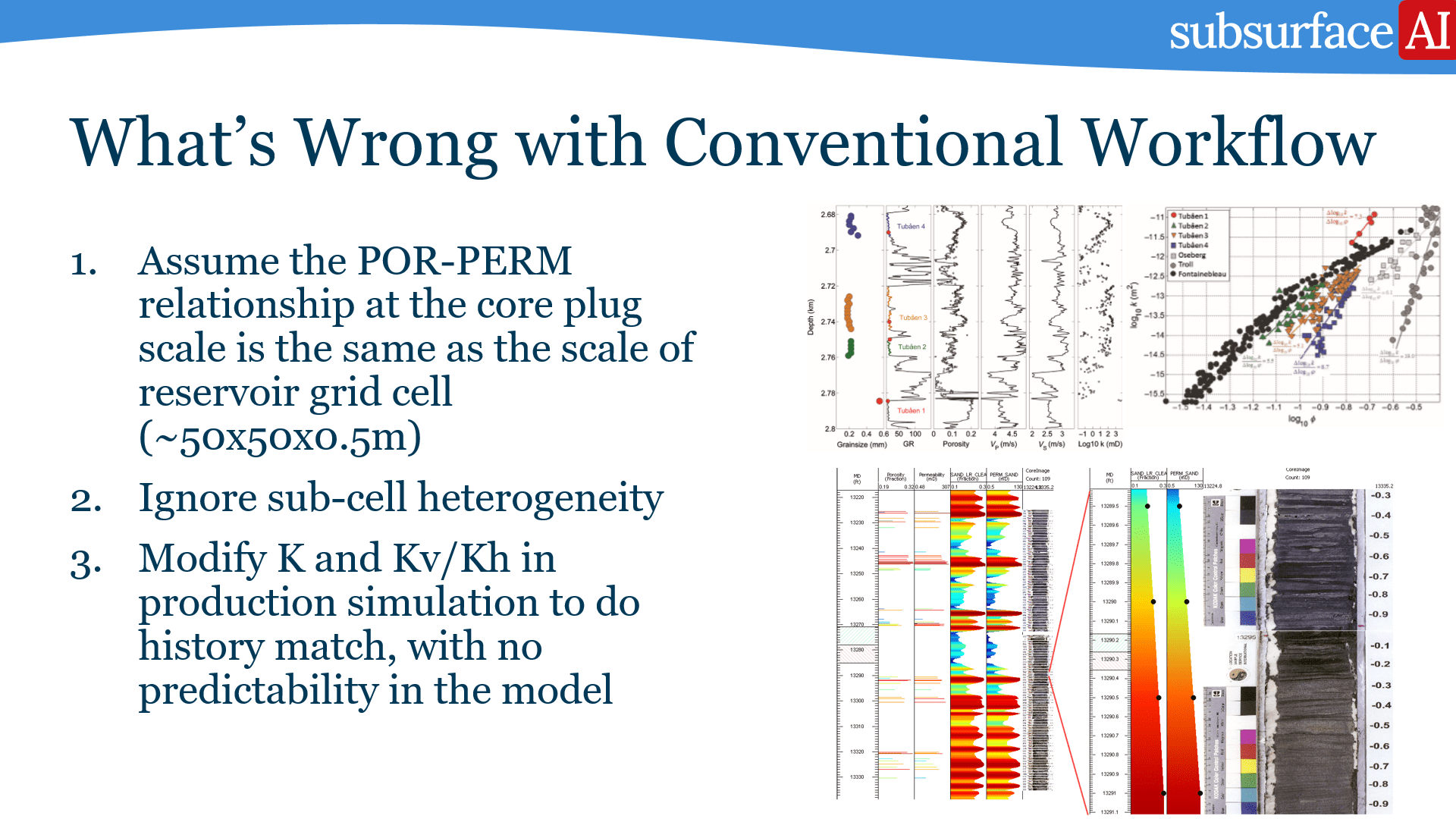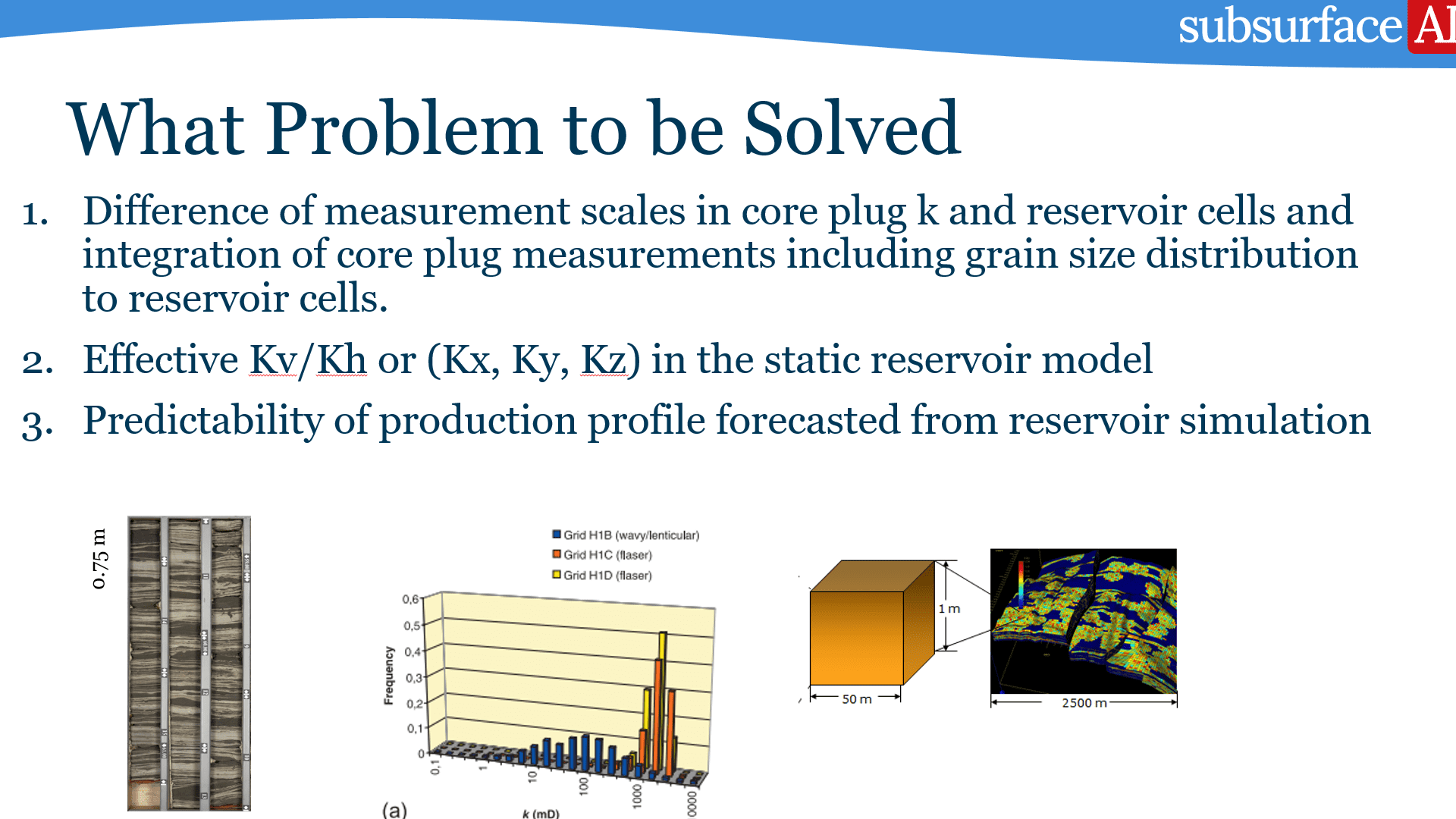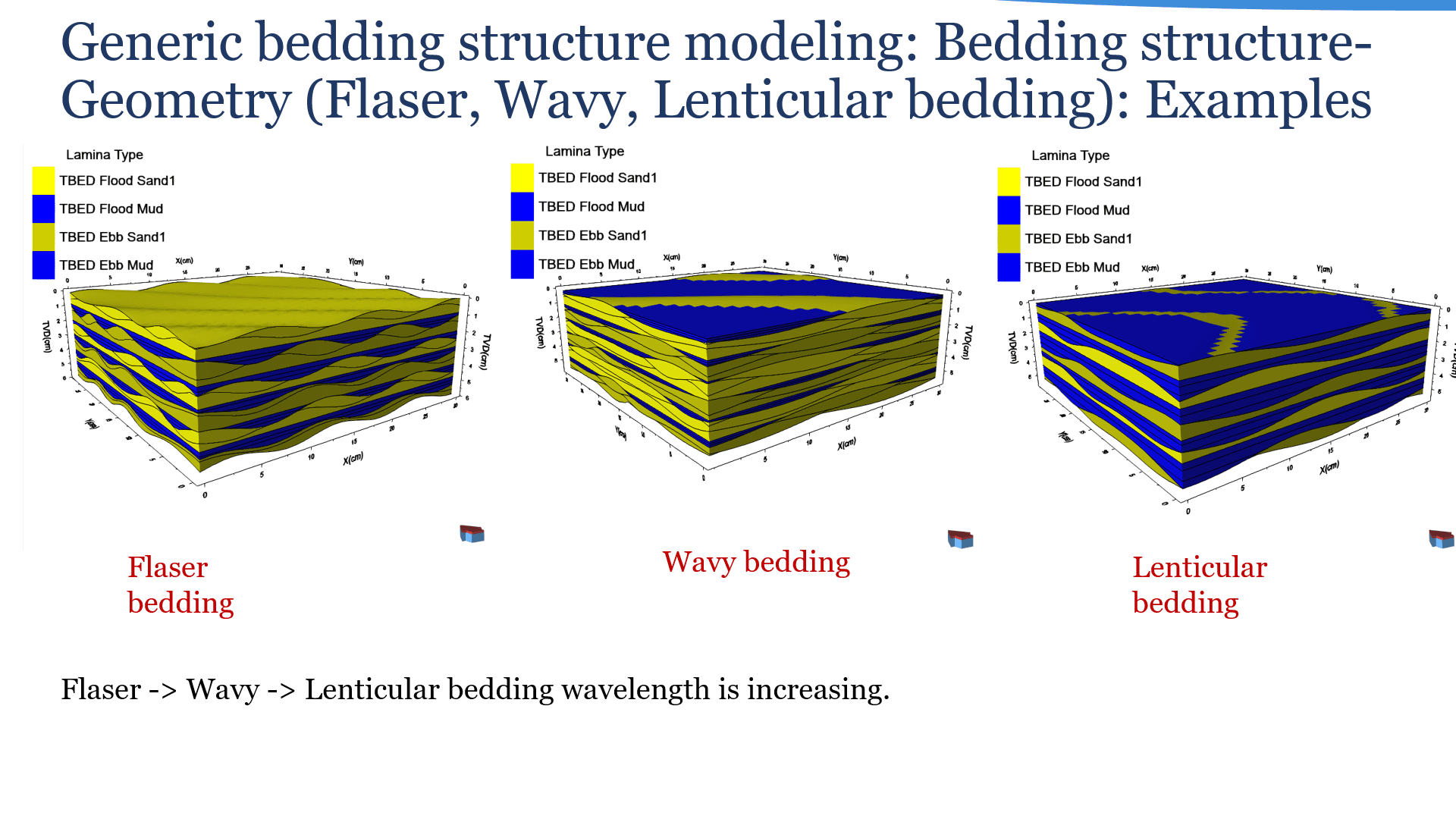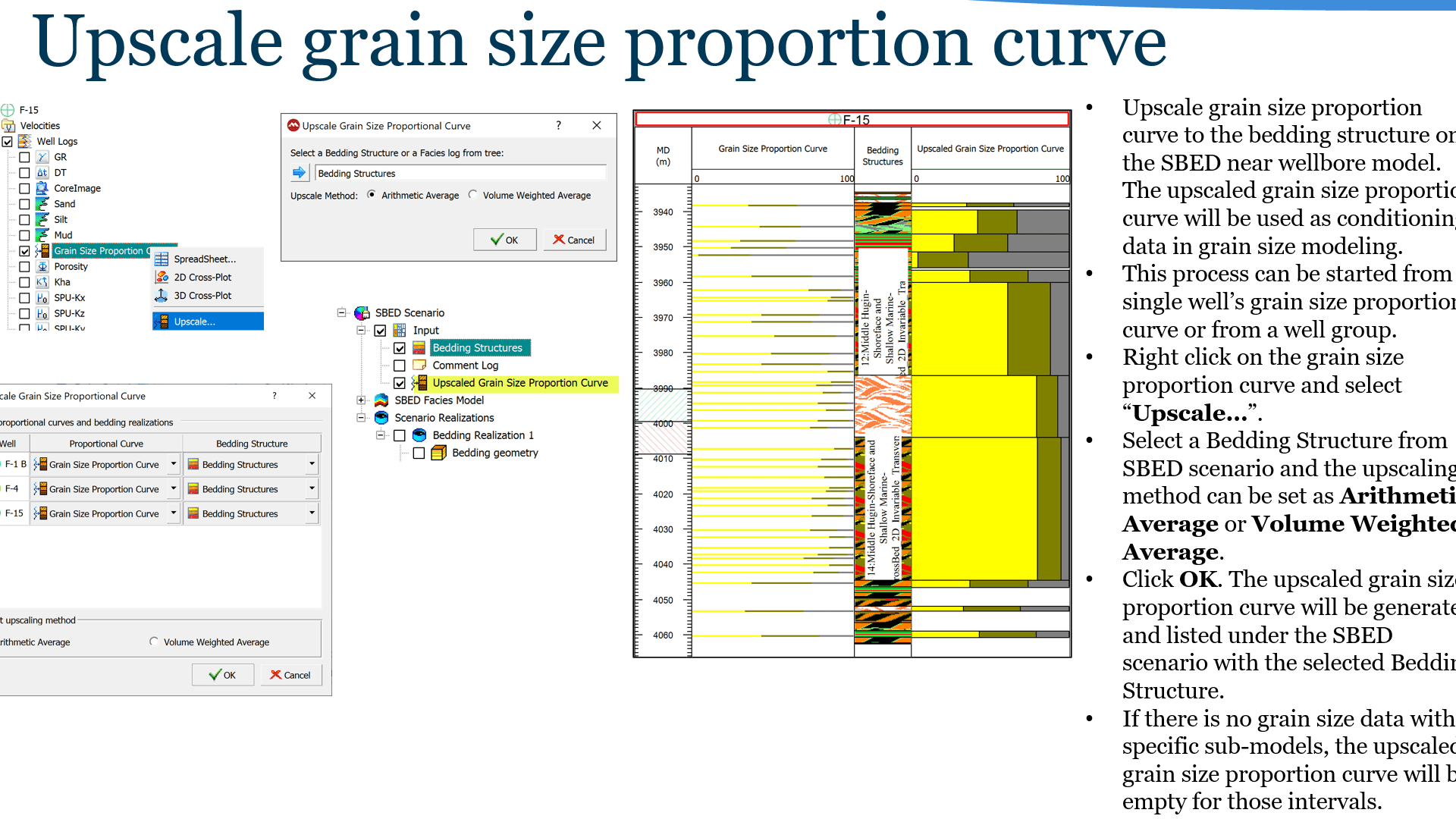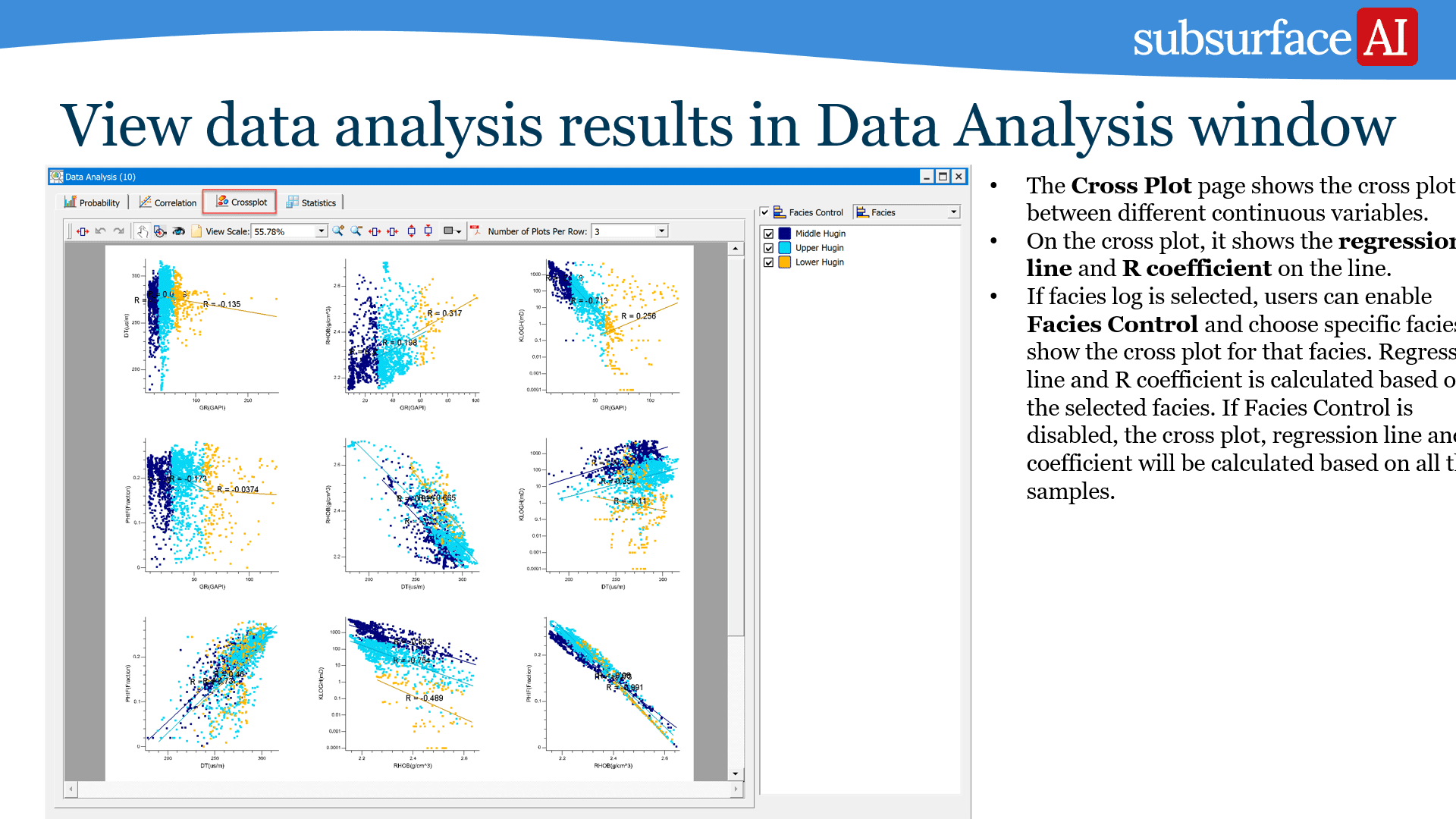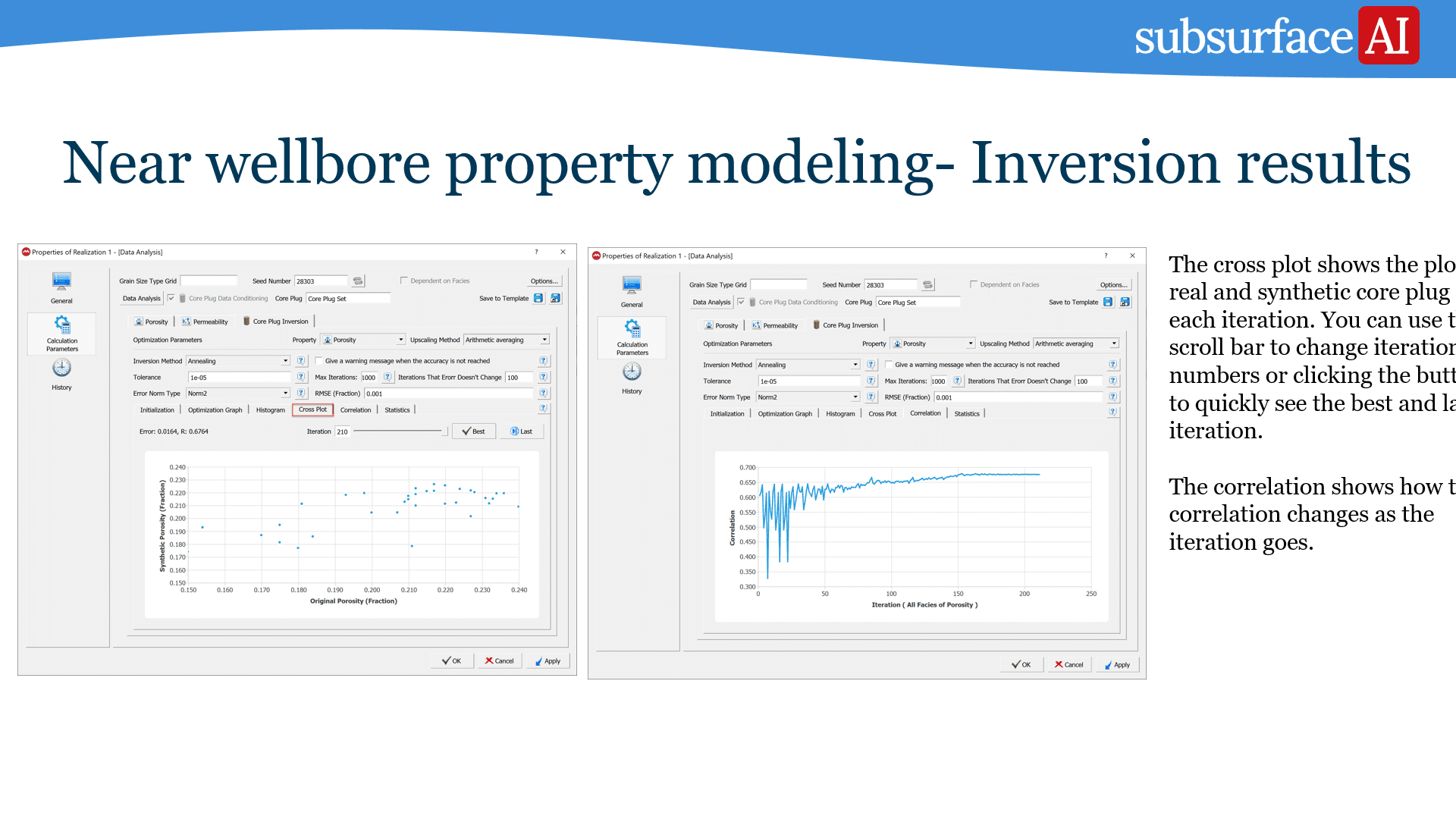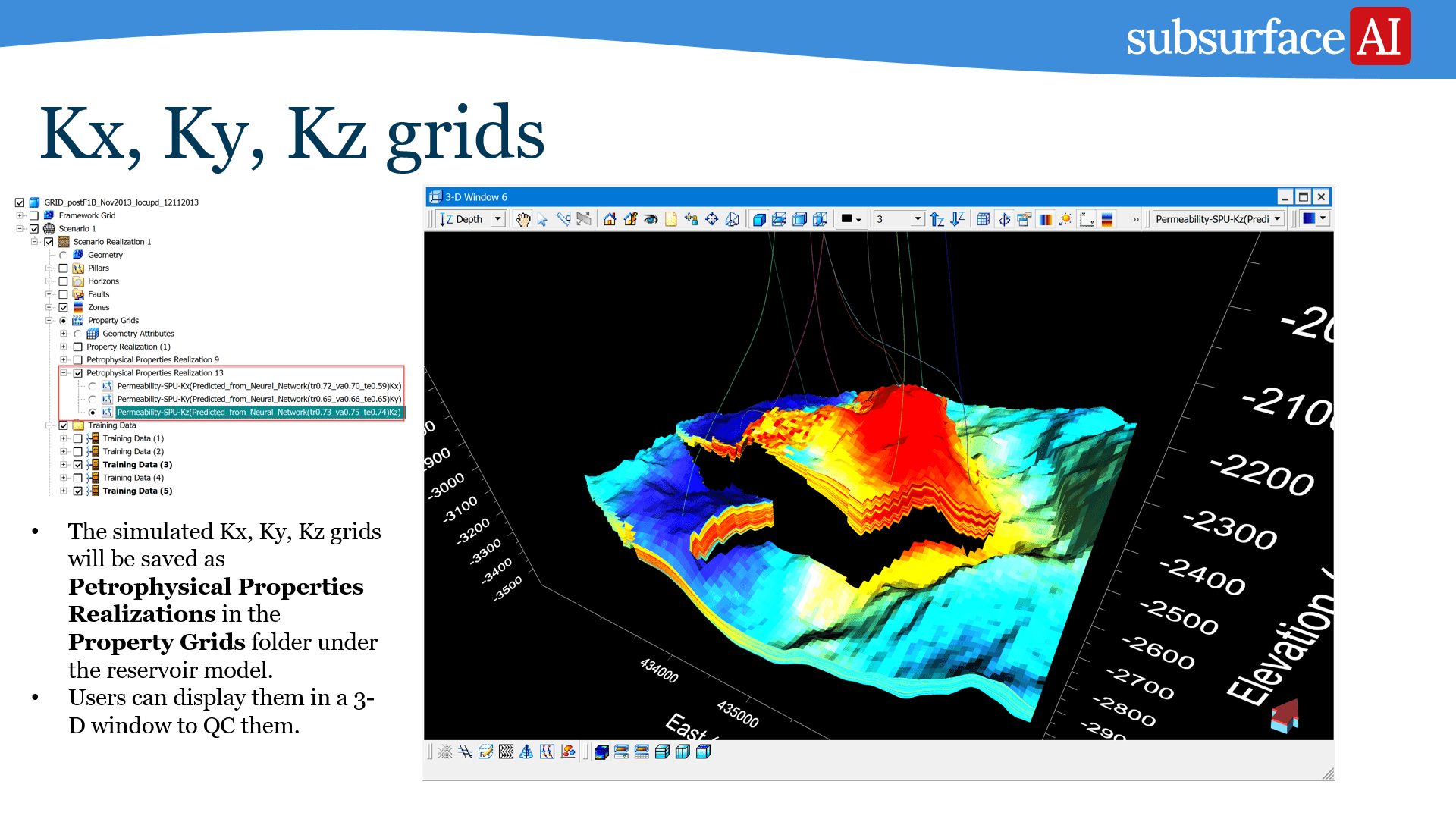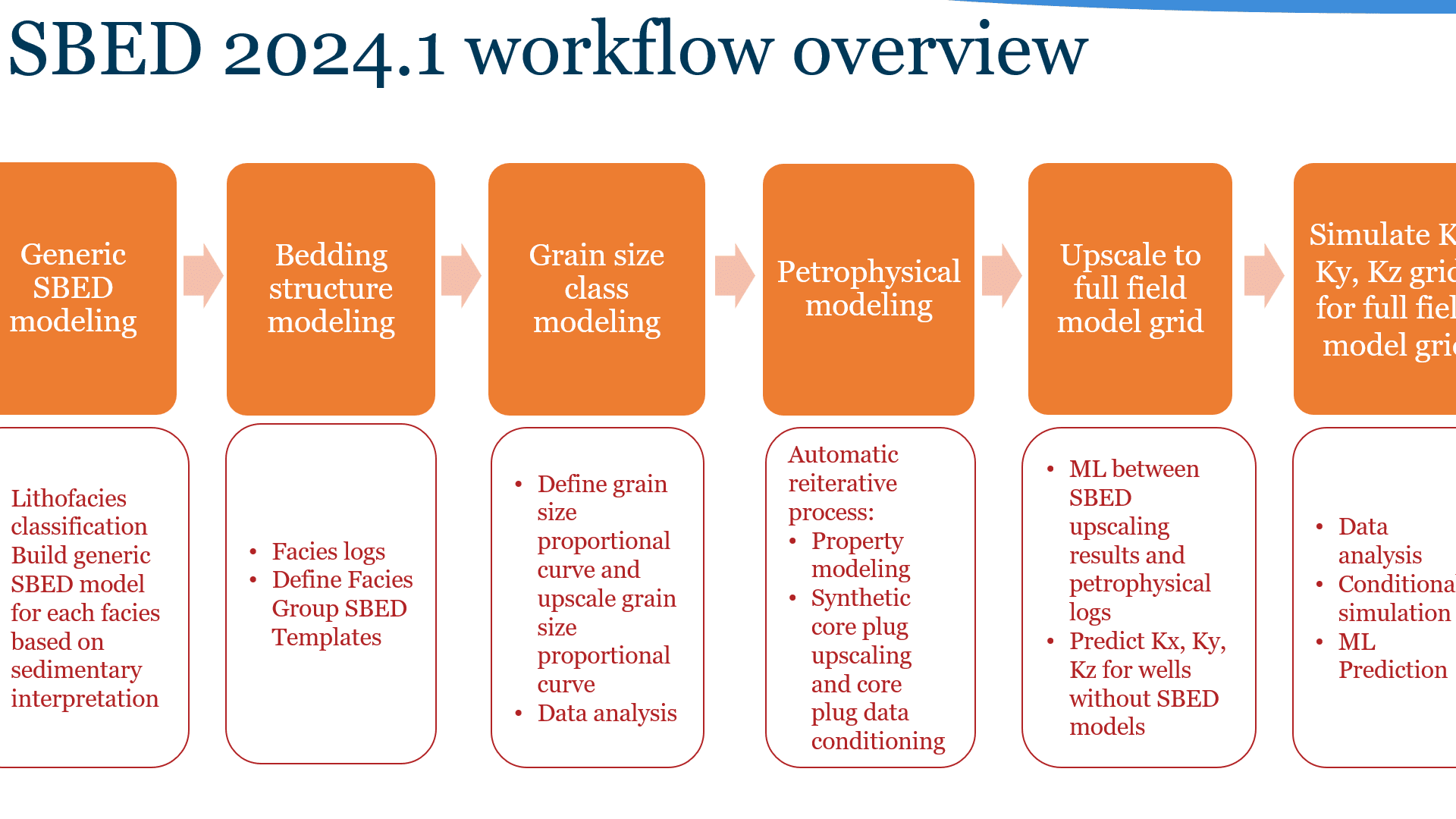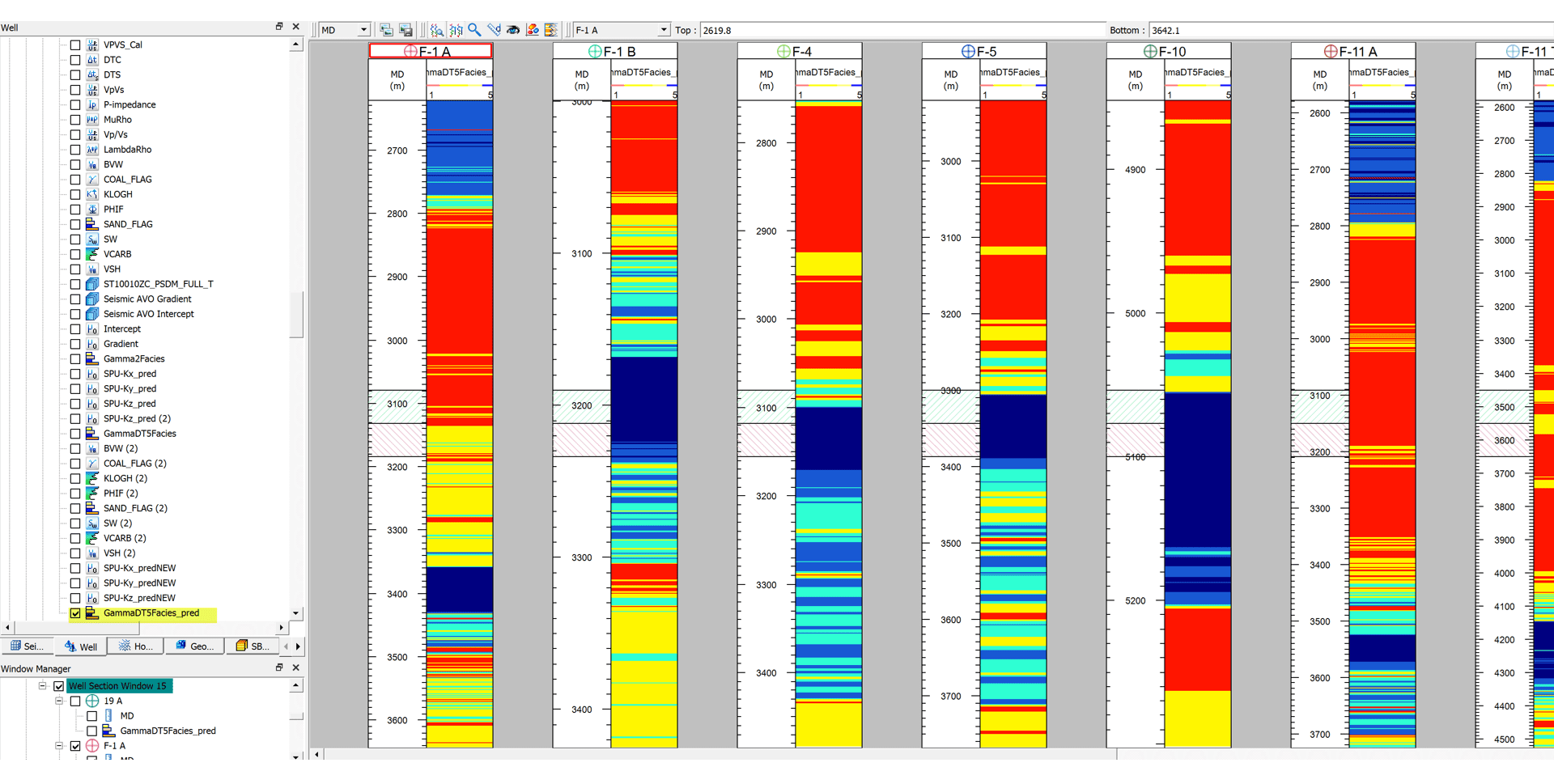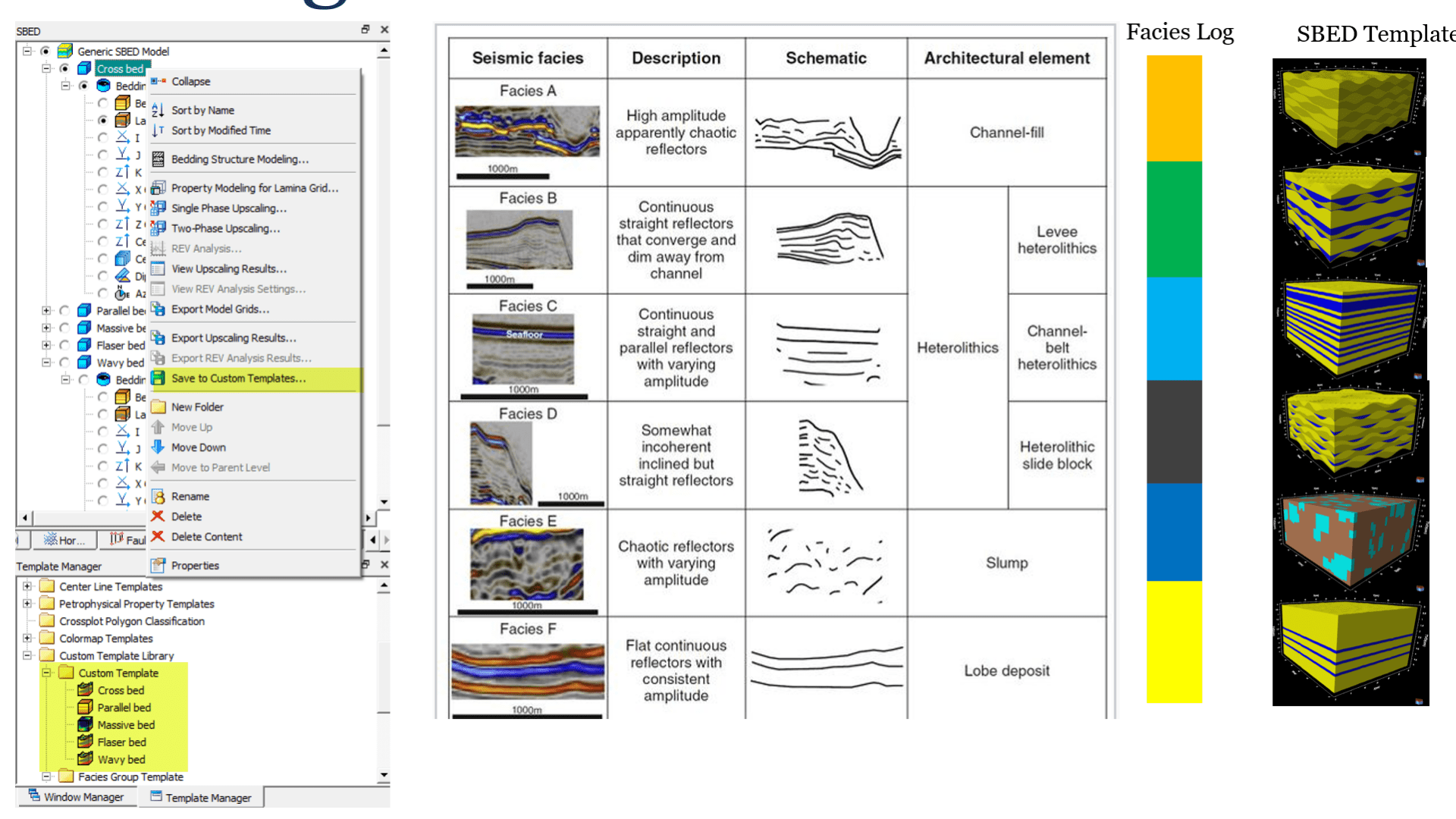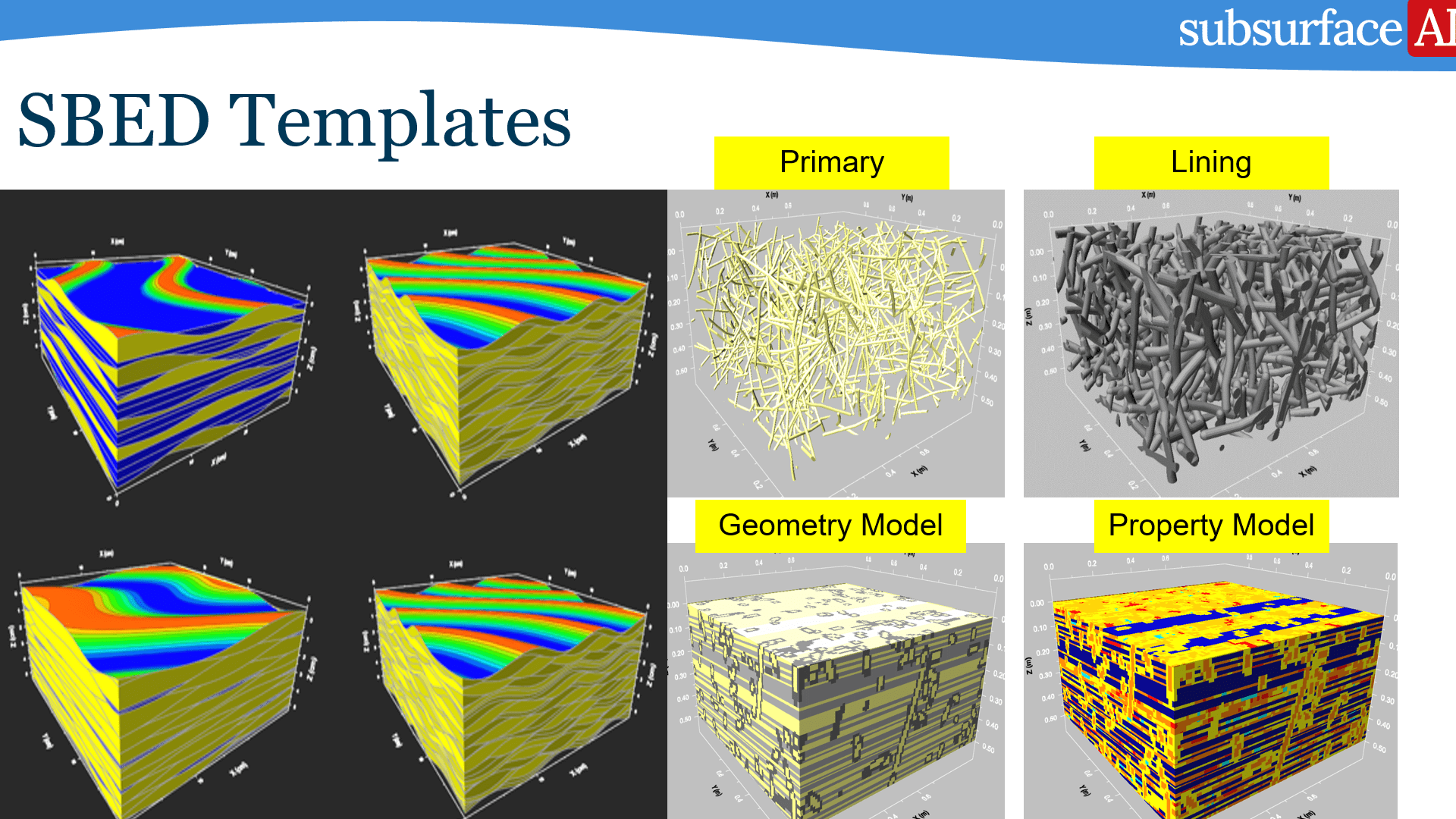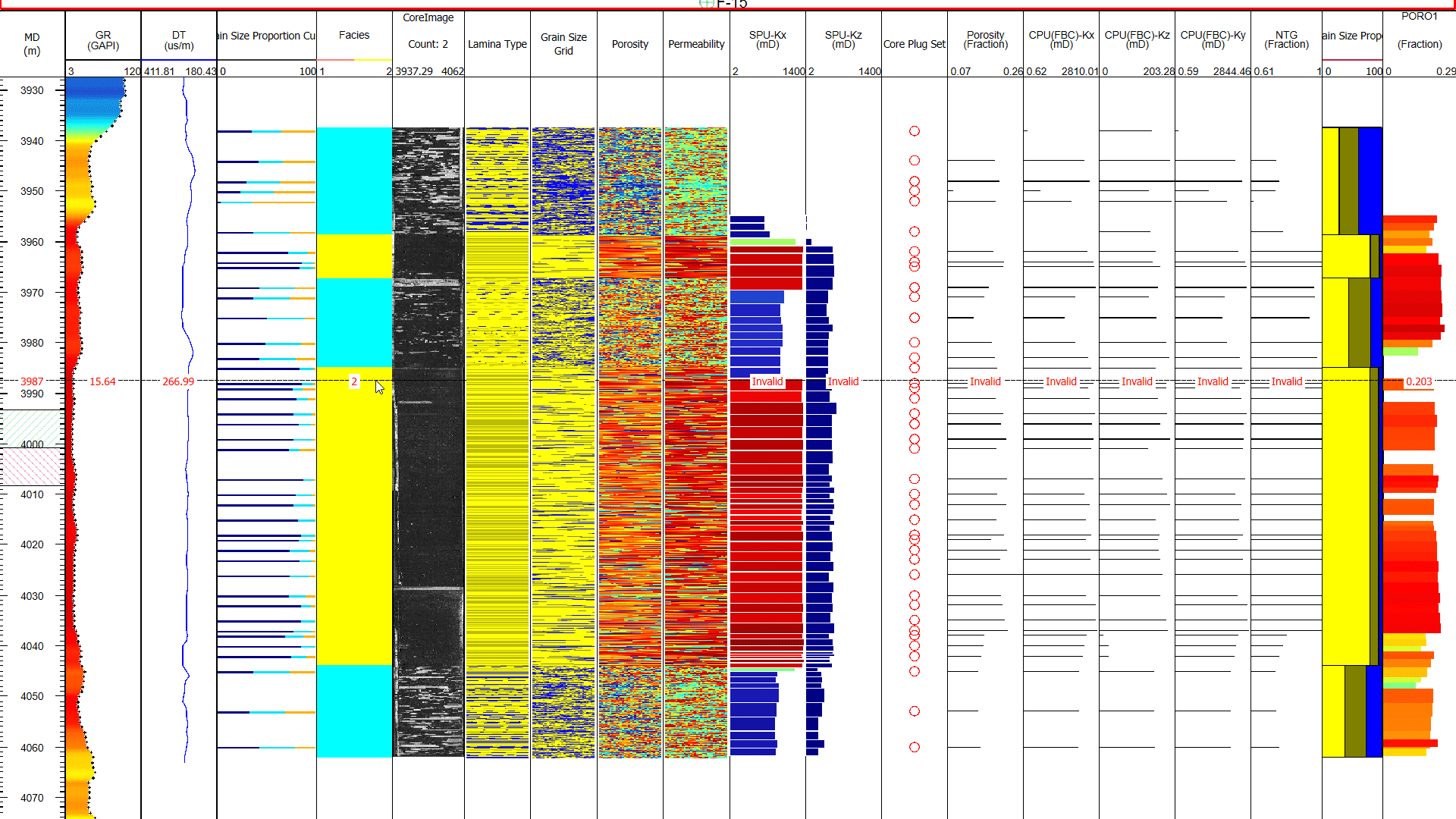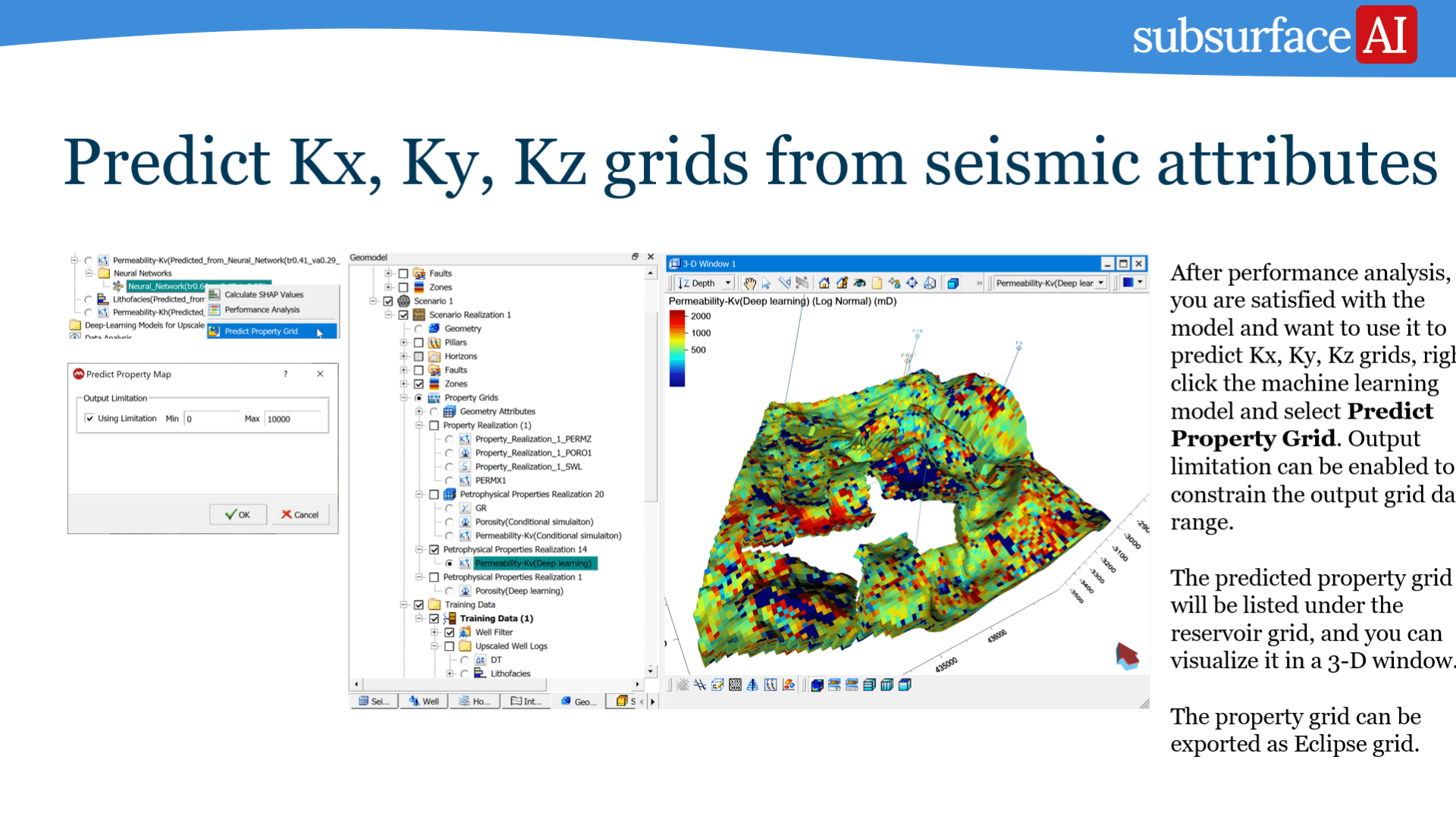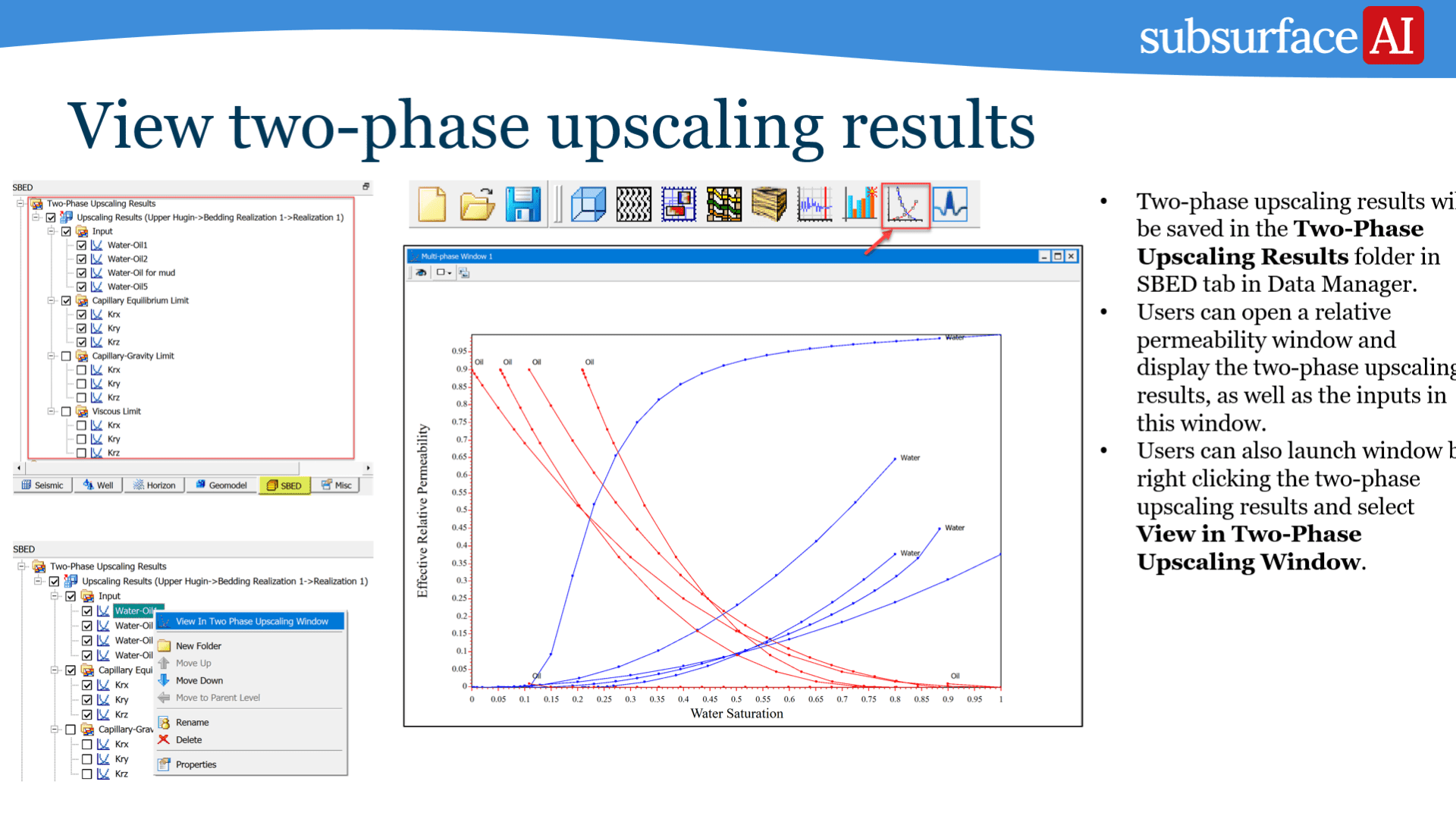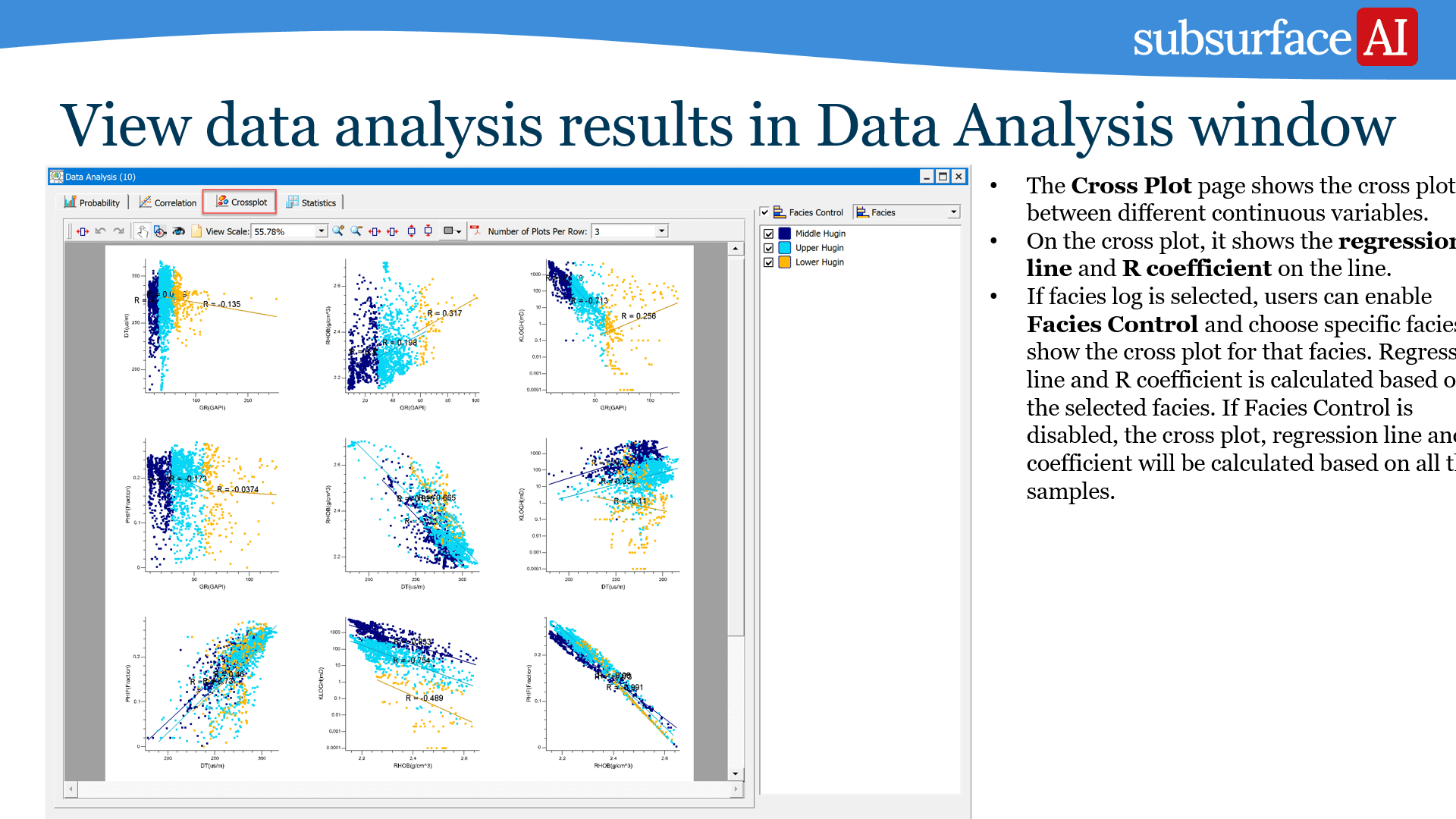SBED Software
Near Wellbore Modeling to Bridge Gaps between Core to Full Field
SBED (Sedimentary BEDding), now a premier package within the AI-infused integrated platform SubsurfaceAI, represents a paradigm shift in reservoir modeling and analysis. This state-of-the-art software solution is meticulously designed to bridge the significant gaps that have long existed between core data analysis and comprehensive reservoir models.
Traditional methods in using core plug data in reservoir permeability modeling have flawed assumptions , primarily due to their inability to adequately account for the complexities and heterogeneities inherent at the lamina and bedding scales. This oversight typically leads to either overestimation or underestimation of reservoir properties, resulting in flawed resource management and planning. SBED addresses this challenge head-on with its advanced and rigorous workflow, which is specifically tailored to model geological variations with exceptional precision at both the lamina and bedding scales.
The power of SBED lies in its detailed and nuanced approach to data analysis. By meticulously modeling these fine-scale geological heterogeneities, SBED offers a more accurate and comprehensive understanding of the subsurface environment. This in-depth analysis is then seamlessly upscaled, transitioning detailed core data into actionable insights at the full-field reservoir scale. This critical step ensures that the intricacies observed at a micro-level are effectively and accurately integrated into broader reservoir models.
The benefits of implementing SBED in reservoir analysis and management are multifold. Most notably, it leads to a more accurate estimation of recoverable reserves. By providing a more realistic representation of the subsurface, SBED helps in mitigating the risks associated with resource estimation, thereby ensuring more efficient and sustainable extraction processes.
Furthermore, SBED significantly enhances decision-making in production planning. The insights garnered from its sophisticated modeling provide a robust foundation for developing optimized production strategies. This not only maximizes resource extraction but also aids in prolonging the life and profitability of reservoirs.
In essence, SBED is a transformative tool within the SubsurfaceAI platform, redefining the standards of reservoir modeling and analysis. It offers an unparalleled level of detail and accuracy, making it an indispensable asset for any organization striving to advance its understanding and management of subsurface environments. With SBED, companies can look forward to making more informed decisions, leading to improved operational efficiency and resource management in the dynamic field of reservoir exploration and production.
Why Choose SBED
SBED (Sedimentary BEDding) stands as the only solution in the market capable of estimating accurate directional permeability at the full-field reservoir model scale, directly from core and well log data. This unique capability is a cornerstone feature for any organization looking to enhance its reservoir modeling and management practices.
Key Advantages of SBED:
- Precision in Directional Permeability Estimation: SBED’s advanced algorithms and AI-driven analytics enable it to accurately estimate directional permeability, a crucial factor in understanding fluid flow within reservoirs. This accuracy is not just limited to small-scale models but extends to the full-field reservoir scale, ensuring comprehensive coverage and understanding of the subsurface environment.
- Historically Matched Reservoir Models with Predictive Power: One of the most significant benefits of using SBED is its ability to create reservoir models that are history-matched, ensuring they align with past production performance. More importantly, these models possess predictive power for future production performance, a critical aspect for strategic planning and decision-making in resource extraction. The integration of geologically upscaled permeabilities into dynamic simulations adds another layer of accuracy and reliability to these models.
- AI Automation and User-Friendly Interface: SBED is not only powerful but also user-friendly, thanks to its AI-automated processes. This automation streamlines the workflow, making it more efficient and less prone to human error. The intuitive interface ensures that users can easily navigate and utilize the tool, regardless of their technical expertise.
- Seamless Integration with Existing Workflows: Understanding the need for compatibility in technology adoption, SBED is designed to integrate seamlessly with existing core interpretation and reservoir modeling workflows. This integration ensures that the transition to using SBED is smooth, without the need for extensive retraining or overhaul of current systems.
- Comprehensive Solution for Reservoir Management: By combining accurate permeability estimation, predictive modeling capabilities, user-friendly automation, and seamless integration, SBED provides a holistic solution for reservoir management. It empowers organizations to make better-informed decisions, optimize production strategies, and ultimately maximize the value of their reservoir assets.
In conclusion, SBED is more than just a software package; it’s a comprehensive solution that addresses the multifaceted challenges of reservoir modeling and management. Its unique blend of precision, predictive power, ease of use, and integration capabilities makes it an invaluable tool for any organization aiming to excel in subsurface exploration and development.
SBED Workflow
A Step-by-Step Guide to Enhanced Reservoir Modeling
SBED (Sedimentary BEDding) offers a comprehensive and systematic workflow for reservoir modeling, leveraging advanced technology and deep learning to transform traditional practices. This workflow is designed to provide unparalleled accuracy and insight into subsurface environments. Below is an expanded and detailed guide on how a typical project unfolds using SBED:
- Building Bedding Heterogeneity Templates: The process begins with the creation of bedding heterogeneity templates. These templates are meticulously developed based on the interpretation of lithofacies provided by expert sedimentologists. This step ensures that the foundational models accurately reflect the geological complexities and variations present in the subsurface environment.
- Near-Wellbore Heterogeneity Modeling: Utilizing the established heterogeneity templates, near-wellbore heterogeneity models are constructed. These models are further refined using detailed core data, ensuring a high-resolution representation of the geological features in the vicinity of the wellbore. This modeling is crucial for understanding the immediate subsurface conditions around well locations.
- Simulating Grain Size Type Grids: The next phase involves simulating grain size type grids within these near-wellbore models. This simulation is critical for capturing the granular level variations in sediment composition and structure, which significantly influence reservoir properties and behavior.
- Simulating Property Grids Conditioned by Grain Size Types: Following the grain size simulation, property grids are simulated within the near-wellbore models. These grids are conditioned by the grain size types, ensuring that the variations in physical properties are accurately aligned with the underlying geological textures.
- Flow-Based Upscaling of Properties: A key feature of SBED is its ability to perform flow-based upscaling of properties from the near-wellbore models to static reservoir models. This upscaling is critical for translating detailed local analyses into broader, reservoir-wide applications, ensuring consistency and continuity in the modeling process.
- Building a Deep Learning Model for Upscaling Results: SBED harnesses the power of deep learning to establish a model that correlates the results obtained from SBED-derived upscaling with traditional well logs. This model is a testament to SBED’s integration of advanced AI with traditional reservoir modeling techniques.
- Predicting Upscaling Results in Wells Without Core Data: The final step involves utilizing the deep learning model to predict SBED upscaling results in wells where core data is not available. This predictive capability is invaluable for extending the insights gained from SBED to a broader range of wells, enhancing the overall understanding and management of the reservoir.
In conclusion, the SBED workflow represents a sophisticated blend of geological expertise, detailed data analysis, advanced simulations, and AI-driven predictive modeling. This comprehensive approach ensures that reservoir models are not only highly accurate but also encompass a wide range of geological scenarios, making SBED an indispensable tool for modern reservoir management.
Key Features of SBED
Revolutionizing Reservoir Modeling and Analysis
SBED (Sedimentary BEDding), as part of the SubsurfaceAI platform, is a highly advanced software package offering a range of sophisticated features for reservoir characterization and modeling. Its capabilities are specifically designed to address the complexities of both clastic and carbonate reservoirs. The following expanded descriptions highlight the key features of SBED, illustrating how it stands out in the field of reservoir modeling:
- Extensive Range of Bedding Structure Templates: SBED offers a vast library of over 200 bedding structure templates applicable to both clastic and carbonate reservoirs. This extensive collection allows users to accurately model a wide array of geological settings, ensuring that the reservoir models are robust and reflective of real-world complexities.
- Advanced Biogenetic Structure Modeling: The software is equipped with state-of-the-art biogenetic structure modeling capabilities. This feature is essential for accurately simulating the effects of biological processes on reservoir properties, particularly in carbonate formations where biogenic activities significantly influence porosity and permeability.
- Detailed Fracture Modeling at Micro Scales: With SBED, users can conduct fracture modeling at the fine scales of lamina and bedding. This granularity in modeling provides a more precise understanding of fracture networks and their impacts on fluid flow and reservoir behavior.
- Innovative Flow-Based Upscaling Algorithm: SBED incorporates the latest flow-based upscaling algorithm designed to handle irregular grid geometries. This advanced algorithm facilitates the accurate and efficient upscaling of fine-scale geological features to larger reservoir models.
- Comprehensive Two-Phase Upscaling Process: The software offers a two-phase upscaling process from lamina to full-field scale, accounting for different flow forces. This method ensures that the transition from detailed small-scale analyses to larger reservoir models is both comprehensive and realistic.
- Specialized Near Wellbore Models for Deviated Wells: SBED provides specialized modeling capabilities for near wellbore regions, particularly for deviated wells. This feature is crucial for understanding the unique characteristics and challenges associated with non-vertical wells.
- Exclusive REV Analysis Tool: SBED is the only software in the market that includes a REV (Representative Elementary Volume) analysis tool. This unique tool is critical for accurately determining reservoir properties, offering users the ability to identify the smallest volume over which reservoir measurements are representative of the larger whole.
- Seamless Integration with Full-Field Modeling: The software seamlessly integrates with both static and dynamic full-field modeling platforms. This integration allows for a cohesive approach to reservoir analysis, combining the detailed insights from SBED with broader reservoir simulation techniques.
In summary, SBED’s suite of features makes it an unparalleled tool in the realm of reservoir modeling. Its combination of detailed structural templates, advanced biogenetic and fracture modeling, innovative upscaling algorithms, specialized wellbore modeling, unique REV analysis, and comprehensive integration capabilities position it as a leader in reservoir characterization and analysis.
